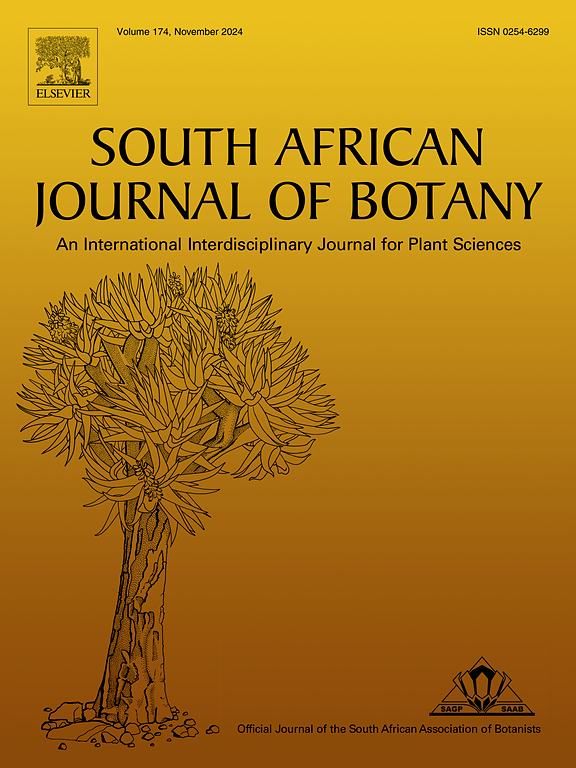彩色栽培台增加了芝麻菜的产量和生物活性化合物
IF 2.7
3区 生物学
Q2 PLANT SCIENCES
引用次数: 0
摘要
芥蓝对人类营养有重大贡献,因为它含有多种生物活性成分,可以帮助预防心脏病。彩色层压板的使用会干扰生物活性化合物的产生。本研究旨在评价芝麻菜在彩色反射培养台上的生长和产生的生物活性物质。实验在两个受保护的环境中进行:温室(覆盖低密度聚乙烯薄膜和Aluminet®)和纱棚(覆盖并以45度封闭黑色单丝纱窗)。试验分为5个处理:T1:对照;T2:铺有亮白色层压板的工作台;T3:亮红色层压板凳;T4:亮蓝色层压板工作台,T5:亮黄色层压板工作台。反光明亮的Formica®提升了长凳的颜色。覆盖亮白色反光材料的栽培台反射率最高。覆盖白色、红色、黄色和蓝色层压板的栽培长凳增加了植物的叶片数量、叶面积、鲜物质和干物质。覆盖着蓝色层压板的长凳增加了生物活性化合物的产生,包括叶绿素和类胡萝卜素。考虑到本研究的结果,可以肯定的是,彩色培养台的使用取得了很好的结果,层叠板在两个周期中对芝麻菜的生长和生物活性化合物的产生都有积极的影响。在生长环境方面,虽然温室的植株较好,但与纱棚的差异不显著。本文章由计算机程序翻译,如有差异,请以英文原文为准。

Colored cultivation benches increase the production and bioactive compounds in arugula
Eruca sativa makes a significant contribution to human nutrition, as it contains various bioactive components that can help prevent heart disease. The use of colored laminates can interfere with the production of bioactive compounds. This study aimed to evaluate the growth and production of bioactive compounds in arugulas on colored reflective cultivation benches. The experiment was conducted in two protected environments: a greenhouse (covered with low-density polyethylene film and Aluminet®) and a screenhouse (covered and closed at 45 degrees with black monofilament screen). The experiment was conducted with five treatments: T1: control; T2: bench covered with bright white laminate; T3: bench with bright red laminate; T4: bench with bright blue laminate, and T5: bench with bright yellow laminate. Reflective bright Formica® promoted the colors of the benches. The cultivation bench covered with bright white reflective material had the highest reflectance. The cultivation benches covered with white, red, yellow, and blue laminates increased the number of leaves, leaf area, fresh and dry matter of the plant. The benches, covered with blue laminate, increased the production of bioactive compounds, including chlorophylls and carotenoids. Considering the results observed in this study, it can be affirmed that the use of colored cultivation benches yields promising results, as evidenced by the fact that the laminates have a positive influence on the growth and production of bioactive compounds in arugula in both cycles. Regarding the growing environment, although the greenhouse produced better plants, the difference was not significantly different from that of the screenhouse.
求助全文
通过发布文献求助,成功后即可免费获取论文全文。
去求助
来源期刊

South African Journal of Botany
生物-植物科学
CiteScore
5.20
自引率
9.70%
发文量
709
审稿时长
61 days
期刊介绍:
The South African Journal of Botany publishes original papers that deal with the classification, biodiversity, morphology, physiology, molecular biology, ecology, biotechnology, ethnobotany and other botanically related aspects of species that are of importance to southern Africa. Manuscripts dealing with significant new findings on other species of the world and general botanical principles will also be considered and are encouraged.
 求助内容:
求助内容: 应助结果提醒方式:
应助结果提醒方式:


